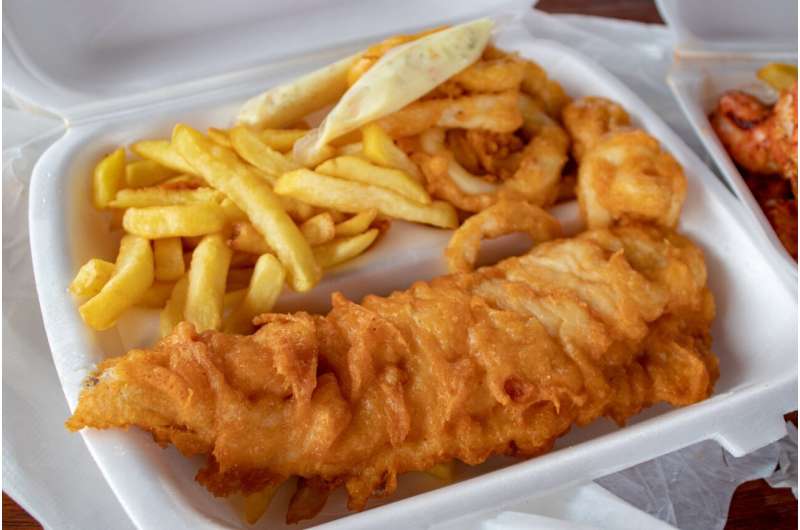Fish and chips shouldn't come with a catch: How Australia can keep illegal seafood off our plates

If you've ever been stopped by quarantine officers at the airport, you might think Australia's international border is locked down like a fortress. But when it comes to trade in seafood, it's more like a net full of holes.
Products sourced from illegal, unreported and unregulated fishing can easily to unsuspecting buyers.
Seafood is among the world's . Yet illegal fishing accounts for an estimated of all wild-caught seafood.
This represents a serious threat to marine ecosystems, food security and even human rights. The phenomenon has been linked to organized crime, , and the depletion of vulnerable species such as and .
The blame usually falls on countries where the fishing occurs, or where the boat is registered. But seafood markets, including processors, retailers and consumers, play a major role in driving demand. They could also play a crucial role in combating illegal fishing.
In , we propose more effective controls on seafood imports.
Australia's role as a seafood-loving nation
Australia spends considerable effort managing its own fisheries, ensuring they are legal and sustainable.
Yet, in Australia is imported.
These imports come mainly from countries with , more illegal activity, and greater vulnerability to labor abuse and slavery.
Current policies leave Australia . , such as the fishing location or species name, is often not required under current trade measures. This means seafood products can be imported under vague labels such as "frozen fish", obscuring their identity and origins.
Suspect seafood products
Certain seafood products such as shark fins are more likely to be sourced illegally for a variety of reasons, including high market value. Other riskier wild-caught products imported into Australia include:
- shark meat ("flake"): high chance of being and
- tuna: a high-value product that could be
- squid: most of Australia's imported squid is caught by Chinese fleets, which are under fire for .
A new border policy could help crack down on fishy imports
Australia has made international commitments to consume sustainable seafood, in and through subscribing to the United Nations 2030 and the . Meeting these commitments will require being more careful about what we import from other countries. This could take the form of stricter border regulations.
The Australian government has begun to explore trade measures aimed at denying entry to illegal or untraceable seafood products. A was formed two years ago to support this process. While a was released at the end of 2023, the final outcome remains delayed—perhaps until after the next federal election.
To inform this process, we reviewed the existing seafood import policies and recommend for improvement.
Only the United States, the European Union, and Japan have systems in place to verify the legal origin of imported seafood. Since these are some of the world's largest seafood import markets, their efforts are important. But their schemes all have notable flaws that Australia should avoid replicating.
These systems are technologically obsolete, lack solid traceability and accounting mechanisms, and rely on trade documents that are often impossible to verify. Most systems are not fully electronic, resulting in shipping containers of seafood arriving with shoeboxes of paper catch certificates.
There are no mechanisms for cooperation between countries. Crosschecking of the same certificate arriving in both France and Italy, for instance, is not yet possible. This makes it easy to reuse certificates across multiple countries, enabling trade of falsely labeled or illegally caught seafood.
Australia's chance to take the lead against fishy imports
Seafood supply chains are notoriously complex. Without effective certification schemes, keeping seafood sourced from illegal fishing operations out of our market is virtually impossible.
Although Australia's seafood appetite is minuscule compared to the US, the EU, or Japan, it has the resources and the opportunity to create a better import control system.
Such a system would involve designing an electronic platform with automated fraud detection mechanisms that tracks seafood products from the fishing boat, through the supply chain, to the Australian border. Australia can then start to close the sizable loophole in its efforts to secure a legal and traceable seafood supply.
Such policies would support sustainable Australian fisheries and help the country's biggest seafood suppliers to source responsibly. Nearly every country in the world trades seafood: if countries implement smart import policies, illegally sourced seafood will become much easier to intercept.
Provided by The Conversation
This article is republished from under a Creative Commons license. Read the .![]()




















